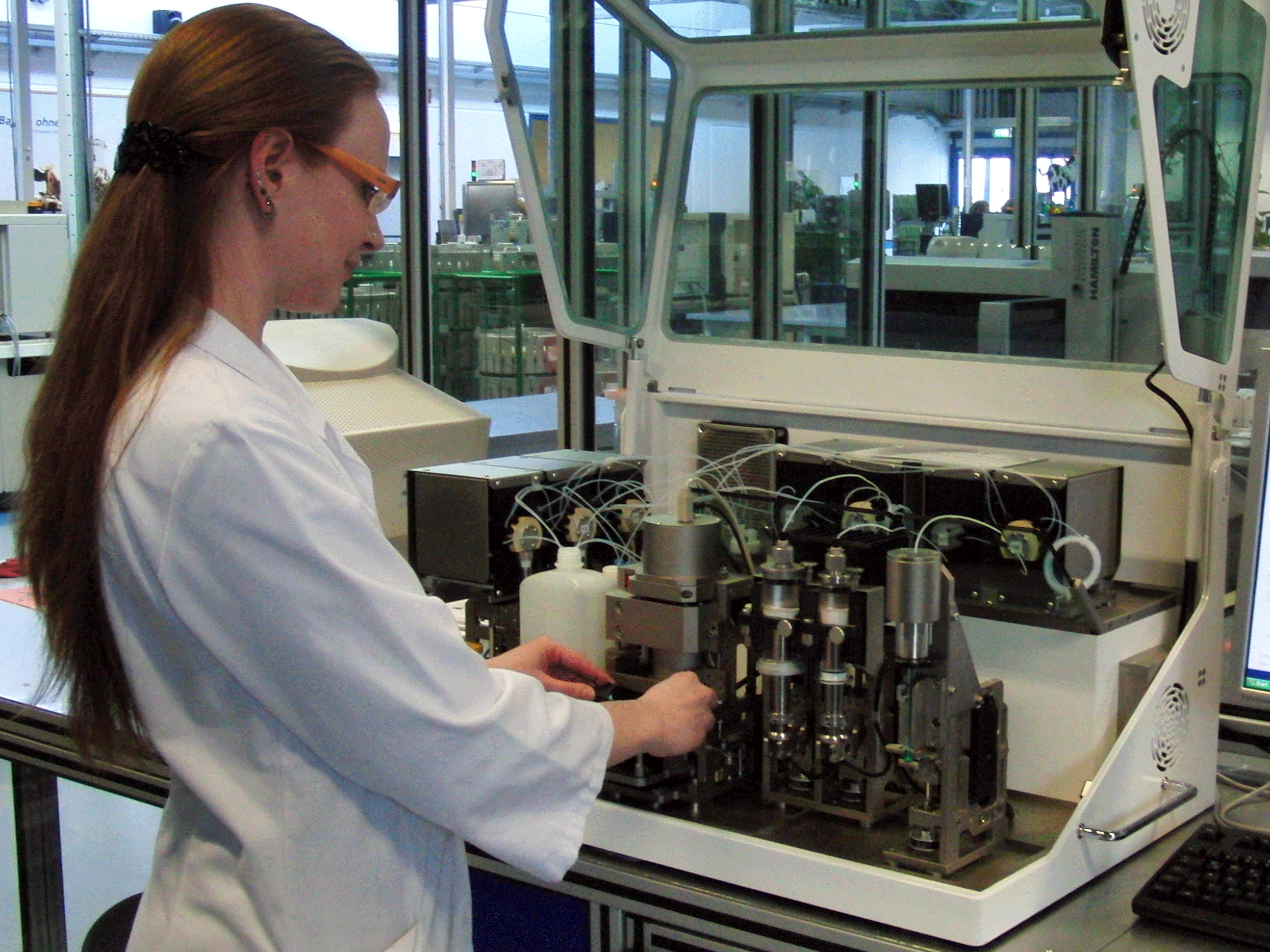Improved security for dairy products
Minilab identifies antibiotic residues in milk

Even at the best of farms, including organic farms, dairy cows can fall ill and require antibiotics. As drug residues in milk may be harmful, milk from sick animals must be kept out of the milk production chain. Meanwhile the European Community has established maximum residue values to protect consumers. However, the current method of testing for antibiotics in milk is laborious and fragmentary. Within the European Dairy Industry overall, loss of production and sanitation of dairy products due to milk contaminated with antibiotics add up to a loss of more than 200 million euros per year.
Dairies attempt to counteract the risk by conducting spot checks. Any milk sample that inhibits the growth of test bacteria comes under initial suspicion and is then tested on the basis of more extensive analyses. The disadvantage is that it takes hours and is very expensive to do so. If drug residues are not found until late in the production process, the lost output and disposal costs can reach business-critical dimensions. Companies in the dairy industry are therefore searching for a fast and simple way of establishing the presence of virtually all antibiotics that may be used on dairy cattle.
With this aim in mind, scientists from the Chair for Analytical Chemistry at the TUM and the Chair for Hygiene and Technology at the LMU developed a glass chip and an analysis unit that can identify the presence of residues from one or more of the 14 most important antibiotics with certainty and in parallel. To do this the scientists use what’s known as an antigen/antibody reaction. A glass plate is marked with dots of the antibiotics, this is known as a microarray. Then they add antibodies to the milk sample which bind specifically to the antibiotics. If an antibiotic is present, most of the antibodies are bound depending on the concentration. The rest of the antibody molecules bind to the corresponding antibiotic on the glass-chip.
Through a chemoluminescence reaction, as it is used to detect blood in forensic samples, the dots carrying the highest load of antibody light up most. If the milk sample contains antibiotics, the luminosity of the dot is correspondingly reduced, because the antibodies have been used up already. The light intensity is measured with an electronic camera, thus supplying proof, not only of whether there is an antibiotic in the milk, but also of how much of it is present.
Working with gwk Präzisionstechnik GmbH, the scientists developed a fully automated minilab, which, in conjunction with the microarray, precisely determines whether or not the maximum permitted limits are exceeded in raw, unpasteurized milk. “These kinds of microarrays have long been in use in the medical sphere and in research labs,” says Dr. Michael Seidel from the TUM’s Institute of Analytical Chemistry. “This milk chip is the world’s first fully automated analysis system to employ the technique in practice with milk samples that have not been pretreated.” It takes just under six minutes to achieve a result. And each microarray can be reused up to 50 times. This makes it the fastest and cheapest system of its kind in the world.
The scientists are hopeful that the analysis system will help avoid production losses and significant disposal costs. “Not only the more than 100,000 milk-producing businesses and more than 36,000 people working in the milk-processing industry will benefit from our development,” says Professor Reinhard Niessner, from the Chair for Analytical Chemistry at the TUM. “Above all the consumers profit from the improved security of dairy products”. They plan to have their sensor system ready for market by the end of this year.
The development of the analysis system was funded by the Bavarian Research Foundation (BFS), the Bavarian State Ministry for Food, Agriculture and Forestry (StMELF), and the Research Association of the German Food Industry (FEI) through the Federation of Industrial Research Associations’ Future Technologies for Small and Medium-Sized Enterprises program (AIF-ZUTECH), the Federal Ministry of Education and Research (BMBF), the Federal Armed Forces and the German Research Foundation (DFG).
Publications:
Kloth, K.; Rye-Johnsen, M.; Didier, A.; Dietrich, R.; Märtlbauer E.; Niessner, R.; Seidel, M.,
A regenerable immunochip for the rapid determination of 13 different antibiotics in raw milk.
The Analyst 2009, 134, 1433 - 1439.
Kloth, K.; Niessner, R.; Seidel M.,
A open stand-alone platform for regenerable automated microarrays.
Biosensors & Bioelectronics 2009, 24, 2106-2112.
Photographs:
http://mediatum.ub.tum.de/?cunfold=977901&dir=977901&id=977901
Contact:
Prof. Dr. Niessner und Dr. Michael Seidel
Technische Universität München
Chair for Analytical Chemistry
Marchioninistraße 17 3, 81377 Munich, Germany
Tel.: +49 89 2180-78231
Tel.: +49 89 2180-78238
reinhard.niessner@ch.tum.de
Technical University of Munich
Corporate Communications Center
- Dr. Andreas Battenberg
- battenberg@zv.tum.de
- presse@tum.de
- Teamwebsite